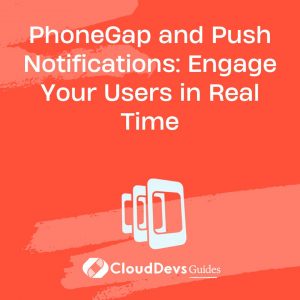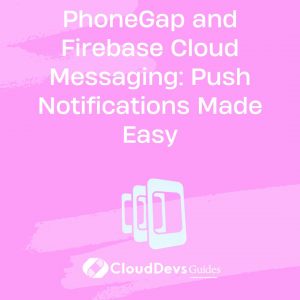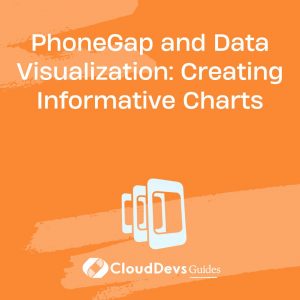PhoneGap and Push Notifications: Engage Your Users in Real Time
In the rapidly evolving landscape of mobile applications, user engagement plays a pivotal role in the success of an app. To keep users actively involved and interested, developers are constantly exploring ways to deliver real-time updates and information. Push notifications have emerged as a powerful tool to achieve this goal, and when combined with cross-platform development frameworks like PhoneGap, the possibilities are truly exciting. In this blog, we will delve into the world of PhoneGap and push notifications, understanding their synergy and learning how to integrate them effectively to create engaging user experiences.
The Power of Push Notifications:
Push notifications are bite-sized messages sent directly to a user’s device, even when the app is not actively in use. They serve as a direct communication channel between the app and its users, providing instant updates, reminders, and personalized content. This feature has transformed the way mobile apps interact with users, enhancing user engagement and retention rates significantly.
Why PhoneGap?
PhoneGap, also known as Apache Cordova, is a popular open-source framework that allows developers to build cross-platform mobile applications using web technologies like HTML, CSS, and JavaScript. With PhoneGap, developers can create a single codebase that runs on multiple platforms, saving time and effort while ensuring consistent user experiences. The ability to integrate native device features using plugins makes PhoneGap an ideal candidate for incorporating push notifications seamlessly into your app.
Getting Started: Integrating Push Notifications with PhoneGap:
Integrating push notifications into your PhoneGap app involves a series of steps, from setting up the necessary accounts to configuring your app and handling incoming notifications. Let’s break down the process into manageable sections:
1. Create Accounts and Set Up:
Before you begin, you need to create accounts on platforms that facilitate push notifications. Apple’s APNs (Apple Push Notification service) for iOS apps and Firebase Cloud Messaging (FCM) for Android apps are commonly used platforms. Register your app on these platforms and obtain the required credentials and keys.
2. Install Plugins:
PhoneGap offers various plugins that simplify the integration of push notifications. For instance, the phonegap-plugin-push plugin streamlines the process by providing easy-to-use methods for sending and receiving notifications. Use the following commands to install the plugin:
bash cordova plugin add phonegap-plugin-push
3. Configure Platforms:
Since PhoneGap targets multiple platforms, you need to configure each platform separately. This involves adding the necessary configuration files and keys obtained from the respective platforms’ accounts. Additionally, you’ll set up event listeners to handle notification events.
4. Request Permission:
Before sending notifications to a user’s device, it’s essential to request their permission. This step enhances user privacy and ensures a positive user experience. Use the PushNotification object to prompt users for permission:
javascript
document.addEventListener("deviceready", onDeviceReady, false);
function onDeviceReady() {
var push = PushNotification.init({
android: {},
ios: {
alert: "true",
badge: "true",
sound: "true"
}
});
push.on('registration', function(data) {
// Send the registration token to your server
});
push.on('notification', function(data) {
// Handle incoming notification
});
push.on('error', function(e) {
// Handle push notification error
});
}
5. Handle Incoming Notifications:
When a notification is received, the notification event is triggered. This is where you can define how your app should respond to different types of notifications. Whether it’s displaying an alert, updating UI elements, or navigating to a specific page, you have the flexibility to craft a user-centric experience.
Benefits of Using Push Notifications in PhoneGap Apps:
- Real-Time Engagement: Push notifications enable instant communication, ensuring that users stay updated without having to actively open the app.
- Personalization: Tailoring notifications based on user preferences and behaviors boosts engagement by providing relevant content.
- Increased Retention: Apps that utilize push notifications often experience higher user retention rates due to sustained interaction.
- Re-engagement: Sending reminders, offers, and updates via push notifications can bring users back to your app.
- User Delight: When used judiciously, push notifications enhance user experience by providing value, rather than being perceived as intrusive.
Best Practices for Push Notifications:
- Relevance: Deliver content that matters to your users, keeping in mind their preferences and behaviors.
- Timing: Send notifications at appropriate times to avoid disturbing users, especially during nighttime hours.
- Frequency: Avoid overwhelming users with too many notifications. Strike a balance to maintain their interest.
- Clear Call-to-Action: Provide a clear and enticing reason for users to engage with the notification.
- Localization: Consider the user’s language and location for personalized communication.
Conclusion
Integrating push notifications into your PhoneGap app is a strategic move to boost user engagement and create memorable user experiences. By harnessing the power of real-time communication, you can keep users informed, entertained, and intrigued. Remember that successful push notifications are those that provide value, respect user preferences, and enhance the overall app experience. With PhoneGap’s capabilities and the versatility of push notifications, you have the tools to create an app that stands out in a competitive landscape. So, go ahead and embark on a journey to engage your users in real time, making your app an indispensable part of their digital lives.
Table of Contents








